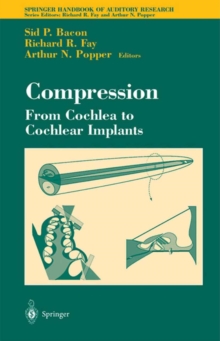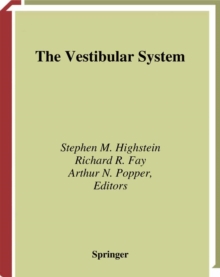
A History of Discoveries on Hearing Hardback
Edited by Darlene R. Ketten, Allison B. Coffin, Richard R. Fay, Arthur N. Popper
Part of the Springer Handbook of Auditory Research series
Hardback
Description
This volume focuses on the history of research on hearing from comparative approaches. Each chapters examines the most formative studies that led to current understanding of hearing across taxa and still influence hearing research in general. Much of the early work on hearing, which goes back to Aristotle, as well as the classic work of 16th to early 20th century scientists (e.g., Spellanzani, Retzius, Ramón y Cajal, and Helmholtz) is not well known to modern investigators. Similarly, work in the first 75 years of the 20th century is also unknown or, in some cases, dismissed because it is “old.” Much of the earlier work describes research approaches and results fundamental to our understanding of hearing as well as the beauty of observation and synthesis.
The pioneering work on hearing contains ideas and questions that are still germane today.
Thus, the goal of this volume isto introduce, review, and put into perspective, older but exemplary, extraordinary studies by investigators that form the basis of our knowledge as well as questions being asked today. Each chapter includes the first significant observations and approaches to hearing in the taxa and/or hearing type that is the focus of the chapter with some of the most important earlier papers discussed in some detail, including the theories, formative experiments, results, and conclusions. Each chapter provides briefer notations and citations of additional important papers that are outgrowths of the founding research – or correlate and even reverse the original works. This volume is a departure from the classic approach established for the SHAR books in which the focus has been on a single topic, and on the most recent and exciting discoveries. One difference in this volume from past SHAR volumes is that we have a more coordinated approach for the chapters to ensure that this volume is, indeed, a documentation of hearing research history, not a review of the latest status of the topic. A second difference is that the focus of the volume is on the historical value of studies. In that sense, the volume maintains the tutorial value for which SHAR books are famous, but it explores the ancestry of modern research in order to help new researchers to gain perspective on important questions and on fundamental information they may not fully appreciate – to their loss.
Our interest in doing this volume comes from phenomena familiar to most senior investigators - that younger investigators often have little or no sense of the history of their discipline, and they often do not know that their “hot” new idea was not only pursued, and often solved, but further that it was solved in an elegant way. We believe it is important to bring the methodologies and discoveries on hearing done before the advent of the internet to light, for the benefit and growth of new research. In deciding on the chapter divisions for this book, we considered a number of different organizational schemes, and particularly using as a focus methodological approaches (e.g., psychoacoustics, low to high frequency types, physiology, anatomy).
However, we came to the conclusion that most investigators tend to be more focused on working within a particular taxonomic group, settling on particular taxa, in many cases driven by the special hearing abilities. We also concluded that that this approach is more naturally related to the evolution not only of hearing, but also to the evolution of ideas, as much of hearing science was part of the “natural philosopher” approach that was a core element of historical discoveries.
Information
-
Out of stock
- Format:Hardback
- Pages:284 pages, 38 Illustrations, color; 46 Illustrations, black and white; XVIII, 284 p. 84 illus., 38 i
- Publisher:Springer International Publishing AG
- Publication Date:20/12/2023
- Category:
- ISBN:9783031413193
Information
-
Out of stock
- Format:Hardback
- Pages:284 pages, 38 Illustrations, color; 46 Illustrations, black and white; XVIII, 284 p. 84 illus., 38 i
- Publisher:Springer International Publishing AG
- Publication Date:20/12/2023
- Category:
- ISBN:9783031413193










